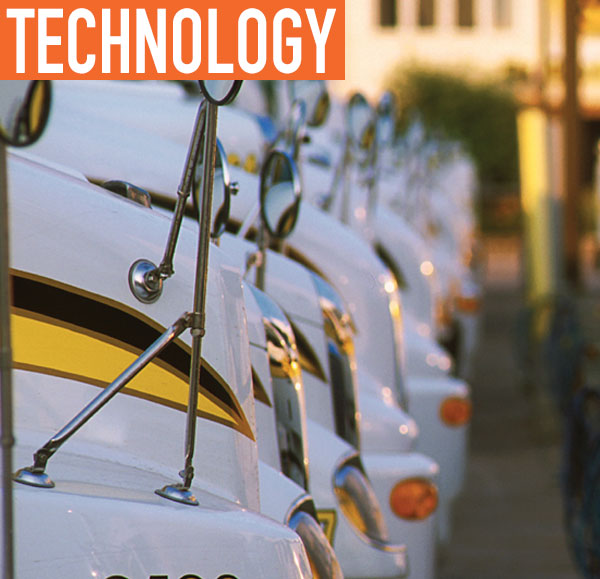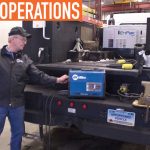Today’s fleet managers know that to be successful on any project, they need to have access to tools that will help them work safer, smarter, and more profitably. The secret to being successful is to have access to the right equipment at the right time—because a fleet is just an expense if it’s not working efficiently and cost-effectively.
Next to salaries, the largest expense to a company is the acquisition of its work trucks, along with the management and maintenance of the truck fleet over time. To realize a high rate-of-return on that investment, it’s vital that work trucks operate in the field as long as possible. Part of a fleet manager’s job is to proactively monitor and report on the health and well-being of their work trucks. These reports generally include ordering and replacement activity, fixed and variable cost reports, cost-avoidance and/or savings reports, and the tracking of work truck activity.
Efficiently and cost-effectively storing and tracking work trucks—especially in remote locations—can impact employee salaries, insurance, site communications, and storage maintenance. Savvy fleet managers are always looking for new tools and technologies to assist them.
To be valuable to fleet managers, such tools and technologies must save operational costs and deliver a real return on investment. Solar-powered, motion-activated security cameras—originally developed to help contractors monitor remote construction sites to prevent and deter theft and vandalism—are now changing the way fleet managers obtain information to streamline vehicle management systems. By incorporating security camera systems into their work practices, fleet managers are immediately able to provide all the vital information that is needed from their remote checkpoint and storage, saving time and money.

Using Eye Trax’s security cameras, you can monitor high target areas to help cut losses.
THE TOOLS
Today, most security cameras on the market are either modified hunting cameras or high-end,. time-lapse video cameras that don’t offer motion-sensing technology.
A hunting camera is a cheaper alternative to quality security cameras, but it lacks the picture quality and motion-sensing area since it’s designed to watch a deer trail and not a large remote area. Most hunting cameras require the end user to pick up the internal SD card to view the pictures on a computer. Although this method is the least expensive option, by the time a fleet manager has realized there is a problem, it’s more than likely too late to catch the instigator(s).
Most high-end, time-lapse cameras are designed for the purpose of taking high-resolution pictures on a timed interval. That said, the designers of these types of cameras have left out the ability to use the time-lapse camera as a jobsite security camera by not offering a motion-sensing technology or night-vision capabilities.
Wireless, solar-powered cameras fill the void in remote area monitoring, where security and surveillance couldn’t be performed before due to the expense of trying to provide power and an Internet connection to those areas. One solution is Eye Trax’s cellular-based jobsite camera, which is indefinitely powered by a solar panel, triggered by motion, has night-vision capabilities, and is controlled by a web-based user interface or mobile phone app. Installation takes about 20 minutes and can be done by anyone who can operate a mobile phone and a screwdriver.
By simply turning the cellular security camera on in various remote locations, the system will automatically connect to the closest cellular tower. The mobile application makes aiming the camera easy by simply taking a live picture upon pointing the camera at a targeted area. These features, combined with all the traditional features of a time-lapse video camera, are incorporated into Eye Trax’s camera design.

Eye Trax’s user interface is easy to navigate for the best data collection possible.
THE TECHNOLOGY
When considering the purchase of security cameras for work truck monitoring purposes, it’s important to understand the differences in motion-activated camera systems.
Most motion-detection camera systems use a “change in pixels” trigger method. When the viewfinder in the motion-activated camera sees a percentage change in pixel color, it considers this an event. This type of trigger can cause many false alarms, as anything that changes in front of the motion-activated camera is considered an event, including wind blowing leaves on the trees or trash blowing around a jobsite. When a motion-activated camera creates this many false alarms, fleet managers have a tendency not to be as alert to the picture activity, thus reducing the accountability of the entire motion sensor security camera system.
By utilizing a security camera system that incorporates an integrated passive infrared sensor, events are only triggered by measurable changes in thermal activity. Here’s how it works:
- A passive infrared sensor (PIR) creates an invisible thermal grid in front of the camera viewing area.
- When the thermal grid is disturbed with the introduction of a new thermal profile, the camera will trigger and—in less than half of a second—start taking pictures. Typically, a human, vehicle, or large animal will cause the motion-activated camera to trigger.
- Once the event is captured by the camera, it will be time and location stamped and sent immediately over the system’s secure cellular network to cloud-based servers—along with all of the pictures from the event—for storage and retrieval.
Fleet managers will receive instantaneous alerts that an event has occurred. The system delivers the event to the mobile phone only seconds after it takes place, giving the fleet manager enough time to dial 911 and report a crime against their fleet while it’s still in progress. By calling the police department with live evidence of a crime, the police will consider this a “crime in action” and use every effort to immediately apprehend the perpetrator(s).
MANAGING ASSETS
With security camera systems, fleet managers can better monitor and manage events, such as vehicles coming and going from remote locations. Because pictures can be acquired during the day and night with a time and date stamp and are sent over the cellular network for cloud-based storage, fleet managers can access the camera’s pictures by location name and in chronological order, at any time, from anywhere.
Furthermore, using time-stamped pictures and video to monitor work truck activity over designated periods provides fleet managers with valuable information for developing accurate reports on a fleet. By implementing security camera technology, fleet managers are able to efficiently manage their fleets and cost-effectively reduce their company’s overall costs. ![]()
ABOUT THE AUTHOR:
Jerry McSorley is the president of Eye Trax, the leading manufacturer of wireless outdoor security cameras in the world. Find out more about Eye Trax products, visit
www.eyetrax.net, or call 800.594.4157.
_______________________________________________________________________
MODERN WORKTRUCK SOLUTIONS: DECEMBER 2015 ISSUE
Did you enjoy this article?
Subscribe to the FREE Digital Edition of Modern WorkTruck Solutions magazine.
![]()




